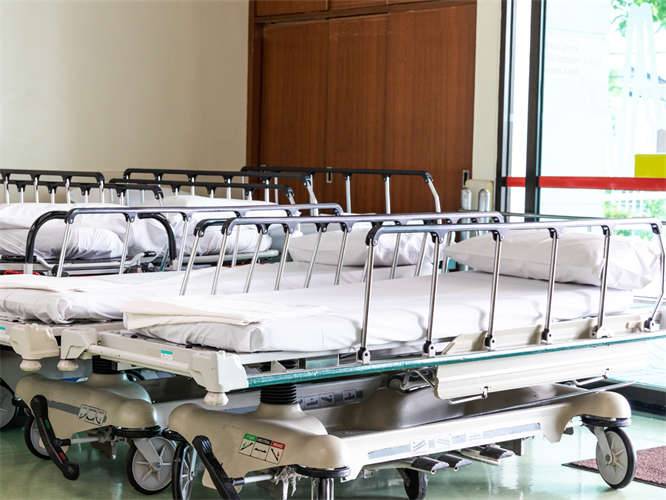Adresse
304, rue Cardinal Nord
Centre Dorchester, MA 02124
Heures de travail
Du lundi au vendredi : 7h - 19h
Week-end : 10h - 17h
Adresse
304, rue Cardinal Nord
Centre Dorchester, MA 02124
Heures de travail
Du lundi au vendredi : 7h - 19h
Week-end : 10h - 17h

Vous êtes-vous déjà retrouvé confiné dans un lit d'hôpital, les yeux fixés sur les mêmes quatre murs jour après jour ? La chambre d'hôpital, lieu de ressourcement et de rétablissement, peut aussi sembler minuscule, surtout lorsqu'on ne se sent pas bien. Dans cet article, nous explorerons la chambre d'hôpital du point de vue d'un patient, en abordant ses éléments de conception, son impact sur l'expérience du patient et comment optimiser son séjour.
Bienvenue sur mon blog !
Avant de plonger dans le contenu, j'aimerais que vous me rejoigniez sur mes plateformes de médias sociaux où je partage plus d'informations, interagis avec la communauté et publie des mises à jour. Voici comment vous pouvez me contacter :
Facebook : https://www.facebook.com/profile.php?id=100071234835011
LinkedIn : https://www.linkedin.com/company/74943205/admin/dashboard/
YouTube : www.youtube.com/@shandongexpertmedicalequip4695
TikTok:www.tiktok.com/@expertmedical
Commençons maintenant notre voyage ensemble. J'espère que vous trouverez le contenu ici instructif, engageant et utile.

Vous êtes-vous déjà retrouvé confiné dans un lit d'hôpital, les yeux fixés sur les mêmes quatre murs jour après jour ? La chambre d'hôpital, lieu de ressourcement et de rétablissement, peut aussi sembler minuscule, surtout lorsqu'on ne se sent pas bien. Dans cet article, nous explorerons la chambre d'hôpital du point de vue d'un patient, en abordant ses éléments de conception, son impact sur l'expérience du patient et comment optimiser son séjour.
Les recherches démontrent systématiquement que l'aménagement d'une chambre d'hôpital peut avoir un impact profond sur le bien-être physiologique et psychologique des patients. Des études ont établi un lien entre certains éléments d'aménagement et divers effets positifs, notamment :
Augmentation de la satisfaction des patients : Les patients satisfaits de leur expérience hospitalière sont plus susceptibles de suivre leurs plans de traitement et d’obtenir de meilleurs résultats de santé globaux.
Réduction du stress et de l’anxiété : Il a été démontré que la lumière naturelle, les couleurs apaisantes et les environnements calmes réduisent les hormones du stress et favorisent la relaxation.
Amélioration de la qualité du sommeil : Des lits confortables, un éclairage réglable et des mesures de réduction du bruit peuvent conduire à un meilleur sommeil, essentiel à la guérison.
Gestion améliorée de la douleur : Les patients dans des environnements apaisants signalent souvent des niveaux de douleur plus faibles et nécessitent moins de médicaments contre la douleur.
Récupération plus rapide : Un environnement favorable et curatif peut accélérer les processus naturels de guérison du corps.
Les recherches démontrent systématiquement que l'aménagement d'une chambre d'hôpital peut avoir un impact profond sur le bien-être physiologique et psychologique des patients. Des études ont établi un lien entre certains éléments d'aménagement et divers effets positifs, notamment :









Transformer une chambre d'hôpital en un véritable chez-soi implique de créer un espace personnalisé propice au confort et à la détente. Voici quelques conseils :
En suivant ces étapes, vous pouvez créer une chambre d’hôpital qui ressemble davantage à un sanctuaire qu’à un établissement médical.
| Caractéristique | Chambre d'hôpital traditionnelle | Chambre d'hôpital centrée sur le patient |
|---|---|---|
| Éclairage | Plafonniers fluorescents | Lumière naturelle, éclairage réglable |
| Niveau de bruit | Niveaux de bruit élevés provenant des couloirs et du personnel | Environnement calme et apaisant |
| Confidentialité | Confidentialité limitée | Rideaux ou cloisons pour plus d'intimité |
| Technologie | Télévision de base | Wi-Fi, portail patient, système de divertissement |
| Personnalisation | Options de personnalisation limitées | Possibilités pour les patients de personnaliser leur chambre |

La technologie a révolutionné les chambres d'hôpital modernes, améliorant l'expérience et les résultats des patients de multiples façons. Grâce à l'intégration de technologies avancées, les hôpitaux peuvent :
Surveiller les signes vitaux : Les appareils et capteurs portables peuvent surveiller en permanence les signes vitaux d’un patient, alertant les prestataires de soins de santé de tout changement dans son état.
Offrir des soins personnalisés : Les lits d'hôpitaux intelligents peuvent s'adapter à la position et au confort du patient, tandis que les écrans interactifs permettent aux patients d'accéder à leurs dossiers médicaux, à leurs divertissements et à leurs supports pédagogiques.
Améliorer la communication : Les solutions de télésanté permettent aux patients de se connecter à distance avec les prestataires de soins de santé, réduisant ainsi le besoin de visites en personne.
Améliorer l’engagement des patients : Les jeux interactifs et les expériences de réalité virtuelle peuvent distraire les patients de la douleur et de l’ennui, favorisant ainsi un séjour hospitalier plus positif.
Bien que des progrès significatifs aient été réalisés dans la conception des chambres d'hôpital, des défis subsistent. Parmi ceux-ci :
La chambre d'hôpital est bien plus qu'un simple lieu de convalescence ; c'est un espace qui peut avoir un impact significatif sur le bien-être du patient. En privilégiant des facteurs tels que la lumière naturelle, l'intimité, le confort et la personnalisation, les hôpitaux peuvent créer des environnements propices à la guérison et à l'expérience du patient.